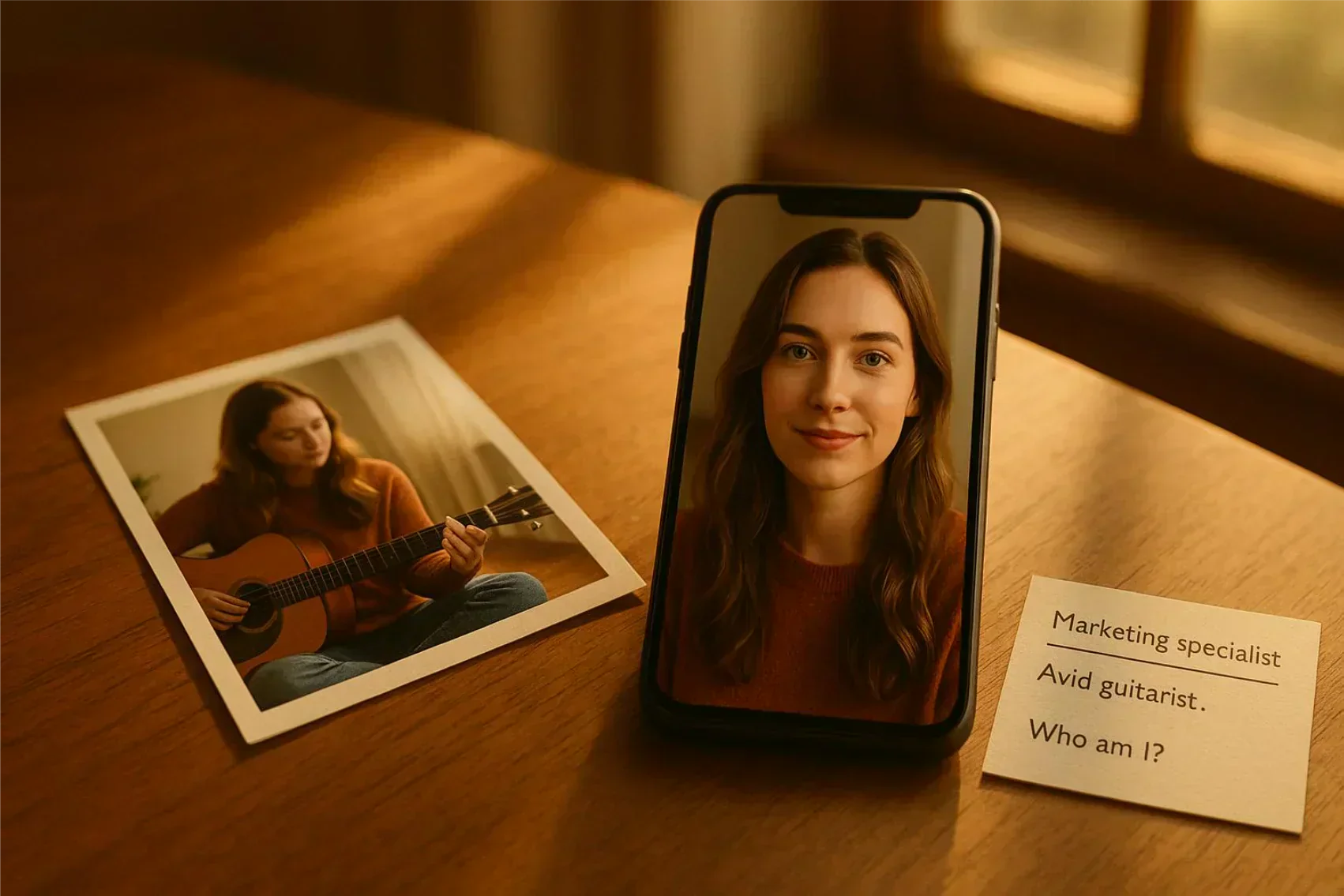
Soft Boy Aesthetic: Gentle Charm in Modern Dating Today
Published on 6/13/2025 • 6 min read
I still remember the first time I received a tiny, hand-scrawled note tucked into a bookstore receipt. It wasn’t flirtatious in the loud, showy sense we often associate with flirting—no grand gestures, no aggressive pursuit—just a few lines that made me laugh, made me think, and made me feel like the person who wrote it had actually listened. That note led to three relaxed dates over six weeks and, more importantly, a friendship that kept growing because neither of us felt pressured to perform. That’s the heart of the soft boy aesthetic: charm that arrives gently, with humor and a little bit of vulnerability.
If you’re tired of lines that sound copied and pasted, or the old “alpha” approach that relies on dominance and bravado, the soft boy offers a different path. It’s not a costume or a rigid checklist; it’s a tone, a rhythm, a way of making connection feel human again. Below I walk through what the soft boy aesthetic means, why it’s resonating now, how to borrow elements without losing yourself, and practical examples—yes, even a quirky poem—to help you flirt with warmth and wit.
What the Soft Boy Aesthetic Actually Is
The soft boy isn’t just a Tumblr avatar or a trending label. For me, it’s an ethos about prioritizing emotional honesty, creativity, and curiosity over performative toughness. Think: someone who watches a melancholy indie film and wants to talk about it, who texts a playlist they made at 2 a.m., who shows up with a well-chosen thrifted cardigan because it feels comfortable and kind.
Core traits that tend to show up: emotional intelligence, a love of the arts, a gentle communication style, and an aversion to domineering behavior. Notably, the soft boy rejects the idea that vulnerability is weakness. Instead, they use it as a way to create trust and intimacy.
A fair warning: the term has a darker cousin—the "softboi"—who weaponizes vulnerability as manipulation. Later I’ll outline how to be authentic and not performative.
Callout: Practical tip — authenticity beats performance. If a moment feels manufactured, pause and reframe it around what you actually feel and want to share.
Why People Are Drawn to the Soft Boy in Modern Dating
Dating in the digital era can feel shallow: profiles are curated, conversations are brief, and ghosting is common. A 2019 Pew Research Center report found a sizable share of adults have used online dating platforms, which has reshaped how we meet and communicate. In that landscape, the soft-boy approach feels like an antidote: an invitation to slow down and be seen.
Here’s what often makes the aesthetic click in a world of swipes and highlight reels:
- Authenticity feels rare and valuable. When someone speaks plainly about what moves them, it’s disarming. I’ve watched conversations go from polite to meaningful in a single evening when someone chose honesty over performance.
- Emotional literacy makes relationships easier. People willing to name feelings and listen without judgment are often better at resolving conflict and offering support—an observation consistent with classic research on self-disclosure and closeness (e.g., Aron et al.).
- Creativity sparks shared experiences. A soft-boy date—whether it’s a secondhand bookstore stroll or a vinyl-listening session—often becomes more memorable because it’s thoughtfully crafted.
- It pushes back on damaging norms. For many, this persona is liberating precisely because it denies the false choice between being "masculine" and being human.
Flirting Like a Soft Boy: The Gentle Art of Making Someone Smile
Flirting for the soft boy is less about high-stakes performance and more about small, well-placed moments that show attention and warmth. You don’t need to imitate a character; you just need a few practical habits.
Give Compliments That Reflect Depth
Compliments are easiest to dismiss when they’re generic. Instead of saying "You’re beautiful," try something that shows you’re paying attention: "You have a way of describing songs that makes them feel like secret codes—tell me about the last one that stayed with you." That’s both a compliment and an invitation.
Share Things That Matter to You
Send a playlist that isn’t just a collection of hits but a small narrative—"Songs that remind me of rainy afternoons" or "tracks I listened to when I first tried cooking for myself." It tells a story and opens a door.
Use Playful, Clever Humor
The soft boy’s humor tends to be intellectual and kind. It’s the kind of joke that makes someone grin and think, not groan. Light teasing that’s clearly affectionate can create a private language between two people.
The Quirky Poem (When It’s the Right Move)
A short, sincere poem can be a charming surprise. The key is brevity and specificity—avoid grand proclamations and instead point to a tiny truth about the person you’re sending it to. I share examples below you can adapt.
When flirting feels safe and funny, you’re not impressing someone—you’re inviting them to be seen.
How to Add Soft Boy Charm Without Performing a Persona
Seeing people adopt a style as if it’s a uniform is a pet peeve of mine. The soft boy aesthetic is most attractive when it’s genuine. Here’s how to incorporate softer traits in a way that feels natural:
Start with Self-Awareness
Ask yourself what feels true to you. If you secretly love poetry but have never shared it, start by bringing it up in conversation—mention a line that moved you, or send a tiny excerpt. If fashion isn’t your thing, don’t force a thrifted cardigan; wear what you feel comfortable in.
Practice Active Listening Like a Ritual
I make a small habit of noting one thing someone said earlier in the day and bringing it up later. Remembering that your date mentioned they loved chai means when you bring it up, they feel seen. That’s a soft-boy-level move that takes zero aesthetic posturing.
Choose Dates That Encourage Confidences
Swap the loud bar for a quieter setting: a walk in a botanical garden, a used bookstore where you point out your favorite cover art, a low-key coffee shop that invites conversation. Choose experiences that lean into curiosity.
Be Vulnerable—but Not Performative
Vulnerability should come from a place of honesty, not as a tactic. If you talk about your feelings, do it because you want to connect, not to accelerate intimacy or gain sympathy. Real vulnerability involves accountability and consistency.
Practical Examples: Messages, Opening Lines, and a Poem
Below are a few concrete, adaptable examples I’ve used or seen work. They’re intentionally short and human.
A text after a date: "I keep thinking about that part where you told me about your first concert. I loved how nervous you were—and also how you danced anyway. Want to do a record-store date Friday?"
An opener for DMs: "I noticed you quoted Nina Simone in your bio. That’s a bold flex—what song could you listen to forever and never get tired of?"
Playful banter: "I’m making a playlist called ‘Songs for Midweek Sieges.’ You in? I need someone to defend my bad 2000s pop hits."
And a short poem you can adapt. Use it as a text, a note, or the last page of an emailed playlist.
- Soft-boy-style poem (short and sincere):
I keep an extra sweater in my bag— not for warmth but for the promise of being there. When you laugh at the lines I almost said, we both know the joke was waiting to be found.
Simple, specific, and not overly saccharine. If poetry feels intimidating, try a tiny haiku about something you both experienced. It shows effort without sounding like a dramatic confession.
The Danger of the 'Softboi' and How to Avoid It
Not all softness is good. The softboi uses vulnerability as a strategy: apologies without behavior change, or "I’m just broken" as a way to avoid responsibility. It’s manipulative and emotionally costly.
How to ensure you’re authentic and not performative:
- Own your mistakes. Apologize clearly and demonstrate change.
- Don’t weaponize sensitivity to avoid commitment. Being unable to commit is fine; framing it as spiritual fragility to excuse inconsistency is not.
- Let kindness be an instinct, not a bargaining chip. If you’re kind only when it benefits you, that’s a red flag.
Genuine softness requires integrity: show up consistently, listen deeply, and hold yourself accountable.
Soft Boy Style—Attitude More Than Aesthetic
If you’re curious about visual cues: think muted tones, layered textures, cozy knitwear, and thoughtful accessories (like a worn-in notebook or a tote). But clothes are secondary. The real signal is how you move through conversation—slowly, thoughtfully, and with curiosity.
If you lean into the aesthetic, do it because it reflects parts of you—not because you think it will make someone like you. The rhythm of your speech, the follow-up questions you ask, and how you respond when someone is vulnerable are what people remember.
When Softness Isn’t the Answer
Soft-boy energy isn’t universal. Some people prefer directness or high energy; some situations call for firm boundaries rather than gentle accommodation. The trick is adaptability—use softness when it helps connection and clarity when a situation demands it.
For example, in moments of conflict, vulnerability is useful but must be paired with accountability and clarity. Being soft doesn’t mean being passive.
Small Habits to Practice Softness Daily
If you want to integrate this style more organically, try tiny rituals rather than a personality overhaul. My changes felt incremental and measurable: over three months, asking one follow-up question in every conversation improved how often people reported feeling "heard" during chats I had with new dates.
- Keep a tiny notebook for memorable lines or book recommendations and bring them up later.
- Volunteer one evening a month to widen your perspective—small acts of service cultivate empathy.
- Curate a handful of playlists for different moods. Sharing them becomes an easy way to open up.
- Practice asking one follow-up question in every conversation.
These are low-effort but high-impact ways to translate an aesthetic into real relational skill.
Real-World Examples of Soft-Boy Dates That Work
- Record-store scavenger hunt: Exchange five picks you think the other will like and explain why. It’s playful and reveals taste.
- Secondhand bookstore afternoon: Sit in the poetry section and read lines out loud to each other. It’s intimate without pressure.
- A simple picnic with a homemade playlist: Bring something small and thoughtful—a pastry, a folded note—rather than the most expensive spread.
- A creative workshop: Try a ceramics class or beginner photography walk. Doing something creative together sparks conversation that feels more than transactional.
Final Thoughts: Make It Yours
The soft boy aesthetic works because it privileges humanity over performance. It gives permission to be tender, to be curious, and to flirt in a way that invites mutual vulnerability and laughter. But it’s not a costume. It’s a set of practices rooted in empathy, creativity, and accountability.
If you’re tempted to try it, start with small, honest moves: a playlist you made because you thought of someone, a note with a line of poetry you actually wrote, a question that digs a little deeper. Digital poem generators can be a playful way to experiment with tone if you want a light nudge—but use them as a prompt, not a script.
Closing with the same small honesty I started with: the soft boy isn’t about being softer than anyone else. It’s about choosing tenderness as a deliberate option in a culture that too often mistakes toughness for everything. That choice, made consistently, feels revolutionary—and quietly irresistible.
Ready to Optimize Your Dating Profile?
Get the complete step-by-step guide with proven strategies, photo selection tips, and real examples that work.


